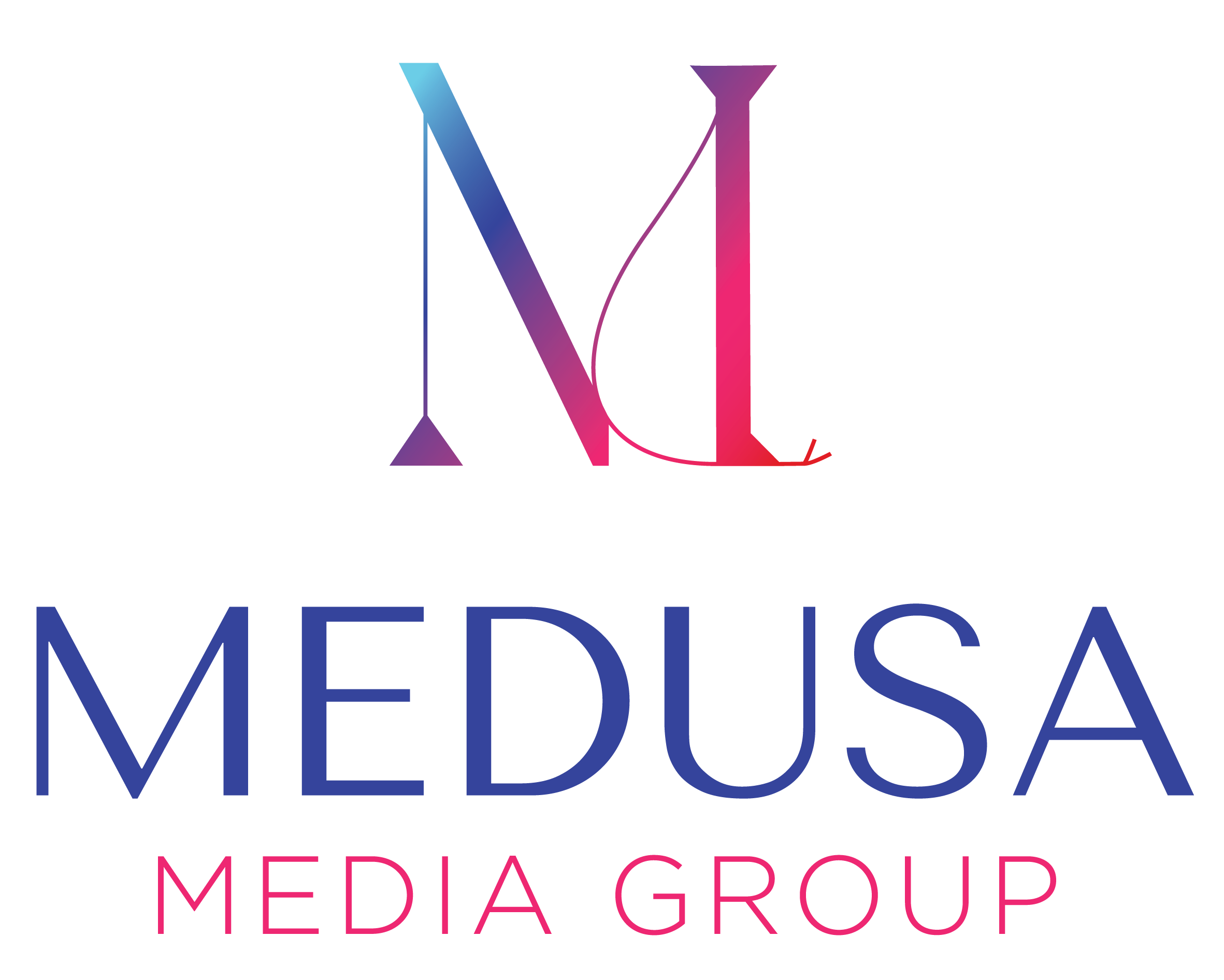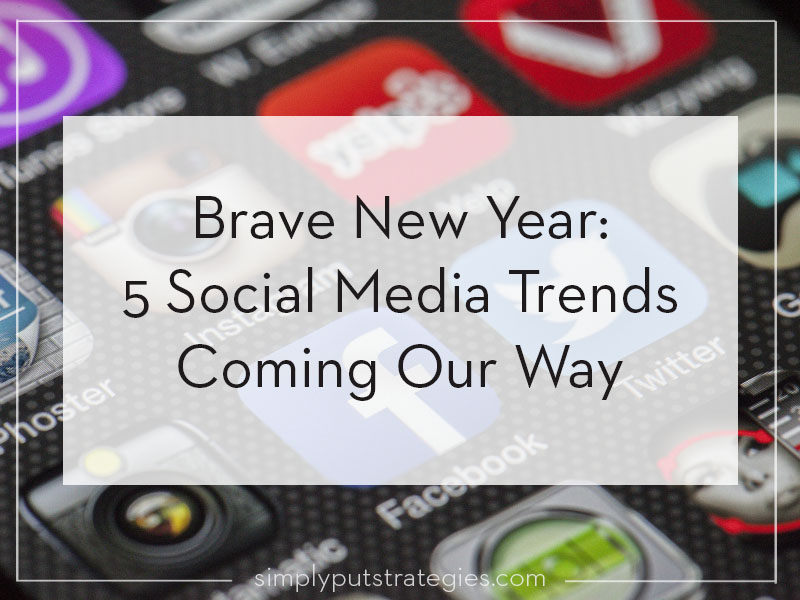The New Year is coming. Though humans are not always great at foresight (agent orange, antibiotic-resistant superbugs), there are a lot of predictions about 2017 social media trends! Last week I attended Hootsuite’s webinar on the subject and it gave much to think about. If you’re a strategist, you’ll want to keep these in mind as you plan your 2017 marketing.
Out with the old (organic reach and vanity)
We’re seeing the decline of organic reach (thank you Facebook) and an upswing in “pay-to-play” advertising. These days, it’s hard to get eyeballs on your content without paying. If paid advertising makes you feel defeated, remember: no social media is free. All the years we spent on organic reach cost time and energy, if not money, for content creation and design. Advertising simply distributes the money differently. It may mean you create less quantity but higher quality content, and put your energy toward making that content the best it can be. Then you pay to advertise it very specifically to get quality conversions.
We’re also seeing a decline in the importance of vanity metrics. Many people have decried vanity metrics for ages, warning us not to “mistake activity for achievement” (John Wooden). Vanity metrics aren’t nothing — they show interest in your brand and interest in connecting with it — but they don’t give insight into quality content or sale conversions. The good stuff lies in segmented metrics about what kinds of traffic convert. (For more than you ever thought to wonder about meaningful metrics, check out Occam’s Razor.)
In with the new (commerce, dark, video, and advocacy)
The social media landscape changes fast. In 2017, we can prepare ourselves for an increase in social commerce (sales that take place natively in a platform), an increase in dark traffic (web traffic that is tough to track), the continued importance of video (no shock there), and the exciting potential of advocacy (my favorite!).
1. Social Commerce
In addition to the online shopping we’re used to (retailers with online shopping carts, Amazon, even brick-and-mortar stores — quaint!), social commerce is getting bigger and bigger. Social commerce is when products are for sale natively on a social media channel, instead of requiring you to click to a retailer’s shopping cart or Amazon. Facebook’s Buy button is one example, and shopping is coming to Instagram.
Pinterest rolled out “buyable Pins” in 2015, and now they’re going further: “Pinterest is a discovery platform in the same category as Google. For brands, it’s about repurposing content from their site and publishing their entire product catalogue as you might a sitemap for Google to aid discovery” (source).
Think about the way you use Google: you enter a search query to find a product you want (if you’re me, you search “handmade leather bags Washington DC” because I have a crush on Stitch & Rivet). Imagine if you bypassed Google altogether, and searched that query in Pinterest!
A tip from Hootsuite was to “make buying fun.” Not everyone will be comfortable buying directly from social, so make the experience appealing by combining products in novel ways, holding flash sales, or rewarding purchases on social.
Recommendation: if you’re a brand selling products, get thee thy product catalogue on Pinterest!
2. Dark Traffic
Dark traffic is “the social sharing of content that occurs outside of what can be measured by web analytics programs.” In layperson terms, it means content that you click from an email or chat, rather than from a social platform or search result. Dark traffic is already with us, and will remain in 2017. So what? you might think. As long as people are sharing my stuff, I don’t care how they do it!
Good, because dark traffic is unavoidable. The trouble with dark is that it makes it hard to measure what you’re doing well. Is someone grabbing an article you shared on Facebook and emailing it? Is someone taking a product you sent to your list and sharing it via chat with her friends? These are good things, but if you don’t know they are happening, then you can’t pat yourself on the back or make improvements.
Recommendation: tag your links with UTM parameters! Hootsuite mentioned adidas, Time, and Burger King as examples of companies embracing dark traffic.
3. VIDEO VIDEO VIDEO
This was a trend in 2016, and it will come as little surprise that it will still trend in 2017. In fact, Hootsuite noted that advertising will soon come to Facebook Live. If video annoys you (I can relate), here are a few things to keep in mind:
- No fancy equipment is needed: social video is successful because it’s informal or spontaneous. It’s appealing because it’s behind the scenes and unscripted (supposedly!).
- 30 seconds is plenty: no one has all day, so don’t bend over backwards to make long videos. Hootsuite recommends experimenting by testing 5-second clips to see what products or content get the best response.
- Silence is golden: remember that the default setting on social is muted sound. Make sure your video holds water when played without sound. Hootsuite mentioned Mailchimp, Dunkin’ Donuts, and Staples as companies that do this well.
- Leverage your people: see the “social proof and advocacy” section below.
I have dragged my feet on videos. I don’t enjoy watching them, so I’m reluctant to make my own. But we don’t get to pick and choose what resonates with the majority, and if reaching customers is important, we must consider video. A client recently launched a self-published book, and I suggested a fun way to include video: every time someone tweeted or posted about her book to social, Leslie recorded a video thanking them. It allowed Leslie to express her gratitude in a way that was simple yet more memorable than a thank-you tweet. (Credit: I got this idea from my colleague, Rachel.)
A video I loved: when I bought from Tradlands, I was pleasantly surprised by the video on their “thank you for purchasing” page. It was a selfie video that the cofounders recorded after hiking up a mountain. They explained where they were, why, and said a heartfelt thank you to me, the buyer. I love that it reinforces their brand (well-made, beautiful clothing for outdoorsy women), shows their “realness” (they were sweaty and a little winded), and makes me feel appreciated.
Naturally, videos are also powerful marketing tools. Apropos: Two Powerful Stories that Made Me Cry
Recommendation: see above. Also, consider dipping your toe into video by using GIFs. GIFs offer the pro of movement, which is memorable and appeals to the eye, without requiring you to record anything.
4. Social Discovery
According to Hootsuite, millennials are likely to use social platforms to research products (older generations are more likely to use search engines like Google). Companies are beginning to publish content straight to social, because there’s no need for social content to drive traffic to your website if the social platform is being searched in the first place.
This is indicative of a very interesting trend: the decline of traditional websites. If your ideal customer is searching for you on YouTube or Instagram, there’s no need for the intermediary of a website. This is a paradigm shifter! I have always considered websites the home base of digital marketing, and that may be changing. This tweet gives some examples.
Websites are still important, not least because a big segment of the market is NOT millennials. I am a millennial, and I still use Google search and websites. But it’s important to know that websites as your marketing home base may become less and less important. In the meantime, you can experiment by publishing content directly to social to see what happens.
Recommendation: try publishing straight to social. Facebook Instant Articles or LinkedIn are good places to start. Microblogging on Instagram is also popular.
5. My Favorite: Social Proof and Advocacy
When are you most likely to buy a product? After someone whose opinion you trust recommends it. This “social proof” is the most compelling kind of marketing. And usually, it’s free – because it’s hard to pay for trust.
Who do you trust?
In 2016, 78% of those surveyed trust “my family and friends” on social media and other online media over any other source (Edelman – webinar). When a friend or acquaintance waxes eloquent about the great hemp shirt they bought, we are more likely to trust that recommendation than if we saw the shirt in a paid post.
This is why “third party” content is critical: customers’ stories, reviews by influencers, and employee advocacy have a much greater influence than most paid advertising because of relationships. It feels good to buy what our friend recommends. We like her, she has good taste, and it spares us from having to choose between the options (because: the paradox of choice).
This is how brand influencers work. The relationship doesn’t have to be in-person, it just has to be felt. Someone with a huge Instagram following isn’t personally friends with all her followers, but she feels like a friend from their perspective. Her recommendation is right next to a recommendation from a sibling or bestie in terms of trust. Case and point: this is the gram that compelled me to buy Rothy’s.
Of these types of third party content, employee advocacy is newest. In the days of yore, employees were discouraged from associating their personal social media accounts with their jobs. But that is changing — why? Because employees who love their employers are great brand advocates. Many employees are enthusiastic about the products their company sells. Can you relate to that? It makes sense — our jobs are more meaningful if we stand behind what the company sells. The more we can share our meaning with others, the better we feel.
All this content is persuasive because it’s authentic. Have you ever been so impressed with a product that you couldn’t shut up about it? Your enthusiasm is golden for the brand you love. All brands can leverage this kind of content to connect with customers.
Recommendation: keep track of the people who post about your products on social. Consider inviting them to be part of a peer brand advocacy group. It will make your customers feel special (increasing their enthusiasm for talking about your products) and gives you a chance to get feedback and incentivize their proof.
Some things don’t change
Thankfully, you do not need to relearn everything you know about social media marketing. Many of the golden rules still apply. I don’t think they will ever go out of style (and I hope they don’t!):
Know your audience: trends do not equally apply. It always depends on the characteristics of your ideal customer. The trends of social commerce, social discovery, and video prominence are most applicable to millennials and the iGen. However, the increase in dark traffic as well as the importance of social proof apply to all types of audiences.
Content is (still) king: several attendees asked the webinar hosts, “if I don’t have the budget for advertising, is there anything I can do to boost organic reach?” Yes: continue to focus on content. Whether it’s high quality written or video content, we use the search engines and social search to find answers to our questions. If the content of your answer is good, we will remember it.
It’s all about relationships: a second answer to the question above has to do with my favorite part of social media — connection. As webinar host Cameron Uganec put it, “one hug at a time.” One by one is how connections and relationships are built. Answering customer questions quickly and well, responding to feedback, having great packaging and delivery methods, and appreciating customers publicly and often – these gestures, both on social media and offline, will always make an impression and grow your brand.
The straw that does not break the camel’s back
Sometimes I read articles like this one, with numbered lists of things I’m supposed to know or do, and I leave feeling overwhelmed. That’s not what I want for you. I want you to leave this article thinking, “hmm, curious!” because you have new ideas to mull over. Embracing or ignoring these trends will not make or break your business – but pushing our comfort zones when it comes to connecting with our customers is a good thing. If Facebook Live or UTM parameters are new to you, try them out. The sky is your limit.
Which trend stands out to you most? Please share in the comments!
This post was originally published on LinkedIn, December 14th, 2016.
(Image by LoboStudioHamburg)








